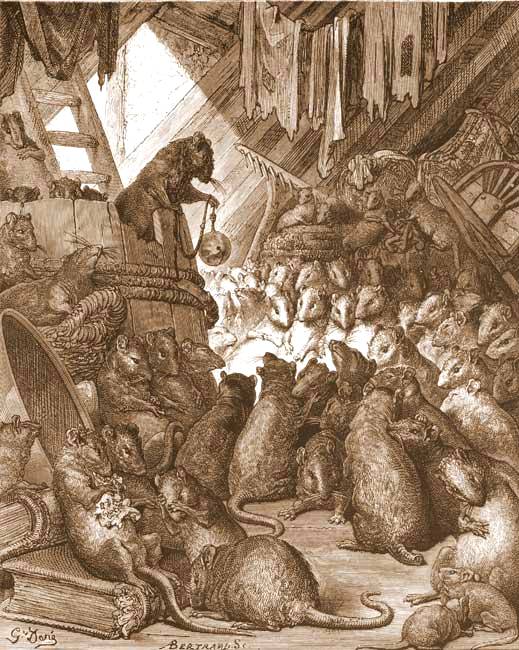|
Dittrichia Viscosa
''Dittrichia viscosa'', also known as false yellowhead, woody fleabane, sticky fleabane and yellow fleabane, is a flowering plant in the daisy family. ''Dittrichia viscosa'' is a highly branching perennial common throughout the Mediterranean Basin. It has long, narrow leaves that are pointed at both ends and have teeth along the edges and glandular hairs on the surfaces. One plant can produce many yellow flower heads each with as many as 16 ray florets and 44 disc florets. Originally, the species was found mainly in dry riverbeds and abandoned fields up to a 1500 m (5000 feet) elevation. Nowadays it is quite common in roadsides and ruderal habitats, even in urban areas. It is considered an invasive species in Australia. The false yellowhead is a tough plant, very resistant to adverse conditions and degraded environments. It is important as food for the caterpillars of certain butterflies and moths, like '' Iolana iolas''. The galls of the plants also are habitat for '' Myopites ... [...More Info...] [...Related Items...] OR: [Wikipedia] [Google] [Baidu] |
Carl Von Linné
Carl Linnaeus (23 May 1707 – 10 January 1778), also known after ennoblement in 1761 as Carl von Linné, Blunt (2004), p. 171. was a Swedish biologist and physician who formalised binomial nomenclature, the modern system of naming organisms. He is known as the "father of modern taxonomy". Many of his writings were in Latin; his name is rendered in Latin as and, after his 1761 ennoblement, as . Linnaeus was the son of a curate and was born in Råshult, in the countryside of Småland, southern Sweden. He received most of his higher education at Uppsala University and began giving lectures in botany there in 1730. He lived abroad between 1735 and 1738, where he studied and also published the first edition of his ' in the Netherlands. He then returned to Sweden where he became professor of medicine and botany at Uppsala. In the 1740s, he was sent on several journeys through Sweden to find and classify plants and animals. In the 1750s and 1760s, he continued to collect and ... [...More Info...] [...Related Items...] OR: [Wikipedia] [Google] [Baidu] |
Myopites Inulaedyssentericae
''Myopites inulaedyssentericae'' is a species of tephritid or fruit flies in the genus ''Myopites'' of the family Tephritidae. Distribution United Kingdom, France, Germany, Estonia, Central Europe, Spain, Italy, Balkans, Ukraine, North Africa North Africa (sometimes Northern Africa) is a region encompassing the northern portion of the African continent. There is no singularly accepted scope for the region. However, it is sometimes defined as stretching from the Atlantic shores of t .... References Tephritinae Myopites Insects described in 1827 Diptera of Europe Diptera of Africa {{tephritinae-stub ... [...More Info...] [...Related Items...] OR: [Wikipedia] [Google] [Baidu] |
Proverb
A proverb (from ) or an adage is a simple, traditional saying that expresses a perceived truth based on common sense or experience. Proverbs are often metaphorical and are an example of formulaic speech, formulaic language. A proverbial phrase or a proverbial expression is a type of a conventional saying similar to proverbs and transmitted by oral tradition. The difference is that a proverb is a fixed expression, while a proverbial phrase permits alterations to fit the grammar of the context. Collectively, they form a folklore genre, genre of folklore. Some proverbs exist in more than one language because people borrow them from languages and cultures with which they are in contact. In the West, the Bible (including, but not limited to the Book of Proverbs) and medieval Latin (aided by the work of Erasmus) have played a considerable role in distributing proverbs. Not all Biblical proverbs, however, were distributed to the same extent: one scholar has gathered evidence to show th ... [...More Info...] [...Related Items...] OR: [Wikipedia] [Google] [Baidu] |
Catalan Tradition
Traditions of Catalonia are sets of traditions, values, customs, and festivities that belongs within the culture of Catalan people. While most are of ancient origin, certain traditions are of relatively recent introduction. There are also some that are common to the whole Catalan society, but others are relevant only to a particular location. Generally, locals welcome outsiders to share with them in their celebration. Festivals and celebrations The '' correfocs'', in which "devils" play with fire close the onlookers, is one of the most striking of the Catalan festive events. The devils are not considered the incarnation of evil; they are sprightly and festive characters, dancing to the sound of drums and the traditional gralla, while they set off their fireworks. Another tradition occurs during the spring festival day of ''Sant Jordi'' (St George's Day, 23 April), in which men give roses (mostly in a deep red color) to women, and women give a book to men as a present. That day ... [...More Info...] [...Related Items...] OR: [Wikipedia] [Google] [Baidu] |
Jellyfish
Jellyfish, also known as sea jellies or simply jellies, are the #Life cycle, medusa-phase of certain gelatinous members of the subphylum Medusozoa, which is a major part of the phylum Cnidaria. Jellyfish are mainly free-swimming marine animals, although a few are anchored to the seabed by stalks rather than being motile. They are made of an umbrella-shaped main body made of mesoglea, known as the ''bell'', and a collection of trailing tentacles on the underside. Via pulsating contractions, the bell can provide propulsion for animal locomotion, locomotion through open water. The tentacles are armed with cnidocyte, stinging cells and may be used to capture prey or to defend against predators. Jellyfish have a complex biological life cycle, life cycle, and the medusa is normally the sexual phase, which produces planula larvae. These then disperse widely and enter a sedentary #Life cycle, polyp phase which may include asexual budding before reaching sexual maturity. Jellyfish ... [...More Info...] [...Related Items...] OR: [Wikipedia] [Google] [Baidu] |
Corsica
Corsica ( , , ; ; ) is an island in the Mediterranean Sea and one of the Regions of France, 18 regions of France. It is the List of islands in the Mediterranean#By area, fourth-largest island in the Mediterranean and lies southeast of the Metropolitan France#Hexagon, French mainland, west of the Italian Peninsula and immediately north of the Italian island of Sardinia, the nearest land mass. A single chain of mountains makes up two-thirds of the island. , it had a population of 355,528. The island is a Single territorial collectivity, territorial collectivity of France, and is expected to achieve "a form of autonomy" in the near future. The regional capital is Ajaccio. Although the region is divided into two administrative Departments of France, departments, Haute-Corse and Corse-du-Sud, their respective regional and departmental Territorial collectivity, territorial collectivities were merged on 1 January 2018 to form the single territorial collectivity of Corsica. Corsican aut ... [...More Info...] [...Related Items...] OR: [Wikipedia] [Google] [Baidu] |
Elba Island
Elba (, ; ) is a Mediterranean island in Tuscany, Italy, from the coastal town of Piombino on the Italian mainland, and the largest island of the Tuscan Archipelago. It is also part of the Arcipelago Toscano National Park, and the third largest island in Italy, after Sicily and Sardinia. It is located in the Tyrrhenian Sea about east of the French island of Corsica. The island is part of the province of Livorno and is divided into seven municipalities, with a total population of about 30,000 inhabitants which increases considerably during the summer. The municipalities are Portoferraio (which is also the island's principal town), Campo nell'Elba, Capoliveri, Marciana, Marciana Marina, Porto Azzurro, and Rio. It is famous for being the site of Napoleon's first exile, from 1814 to 1815. Geography Elba is the largest remaining stretch of land from the ancient tract that once connected the Italian peninsula to Corsica. The northern coast faces the Ligurian Sea, the eastern coa ... [...More Info...] [...Related Items...] OR: [Wikipedia] [Google] [Baidu] |
Astringent
An astringent (sometimes called adstringent) is a chemical that shrinks or constricts body tissues. The word derives from the Latin '' adstringere'', which means "to bind fast". Astringency, the dry, puckering or numbing mouthfeel caused by the tannins in unripe fruits, lets the fruit mature by deterring eating. Tannins, being a kind of polyphenol, bind salivary proteins and make them precipitate and aggregate, producing a rough, "sandpapery", or dry sensation in the mouth. Smoking tobacco is also reported to have an astringent effect. In a scientific study, astringency was still detectable by subjects who had local anesthesia applied to their taste nerves, but not when both these and the trigeminal nerves were disabled. Uses In medicine, astringents cause constriction or contraction of mucous membranes and exposed tissues and are often used internally to reduce discharge of blood serum and mucous secretions. This can happen with a sore throat, hemorrhages, diarrhe ... [...More Info...] [...Related Items...] OR: [Wikipedia] [Google] [Baidu] |
Levant
The Levant ( ) is the subregion that borders the Eastern Mediterranean, Eastern Mediterranean sea to the west, and forms the core of West Asia and the political term, Middle East, ''Middle East''. In its narrowest sense, which is in use today in archaeology and other cultural contexts, it is equivalent to Cyprus and a stretch of land bordering the Mediterranean Sea in Western AsiaGasiorowski, Mark (2016). ''The Government and Politics of the Middle East and North Africa''. p. 5: "... today the term ''Levantine'' can describe shared cultural products, such as Levantine cuisine or Levantine archaeology". .Steiner & Killebrew, p9: "The general limits ..., as defined here, begin at the Plain of 'Amuq in the north and extend south until the Wâdī al-Arish, along the northern coast of Sinai. ... The western coastline and the eastern deserts set the boundaries for the Levant ... The Euphrates and the area around Jebel el-Bishrī mark the eastern boundary of the northern Levant, as d ... [...More Info...] [...Related Items...] OR: [Wikipedia] [Google] [Baidu] |
Complementary And Alternative Medicine
Alternative medicine refers to practices that aim to achieve the healing effects of conventional medicine, but that typically lack biological plausibility, testability, repeatability, or supporting evidence of effectiveness. Such practices are generally not part of evidence-based medicine. Unlike modern medicine, which employs the scientific method to test plausible therapies by way of responsible and ethical clinical trials, producing repeatable evidence of either effect or of no effect, alternative therapies reside outside of mainstream medicine and do not originate from using the scientific method, but instead rely on testimonials, anecdotes, religion, tradition, superstition, belief in supernatural " energies", pseudoscience, errors in reasoning, propaganda, fraud, or other unscientific sources. Frequently used terms for relevant practices are New Age medicine, pseudo-medicine, unorthodox medicine, holistic medicine, fringe medicine, and unconventional medicine, with litt ... [...More Info...] [...Related Items...] OR: [Wikipedia] [Google] [Baidu] |
Essential Oil
An essential oil is a concentrated hydrophobic liquid containing volatile (easily evaporated at normal temperatures) chemical compounds from plants. Essential oils are also known as volatile oils, ethereal oils, aetheroleum, or simply as the oil of the plant from which they were extracted, such as oil of clove. An essential oil is essential in the sense that it contains the essence of the plant's fragrance—the characteristic fragrance of the plant from which it is derived. The term "essential" used here does ''not'' mean required or usable by the human body, as with the terms essential amino acid or essential fatty acid, which are so called because they are nutritionally required by a living organism. Essential oils are generally extracted by distillation, often by using steam. Other processes include expression, solvent extraction, '' sfumatura'', absolute oil extraction, resin tapping, wax embedding, and cold pressing. They are used in perfumes, cosmetics, soaps, ... [...More Info...] [...Related Items...] OR: [Wikipedia] [Google] [Baidu] |







